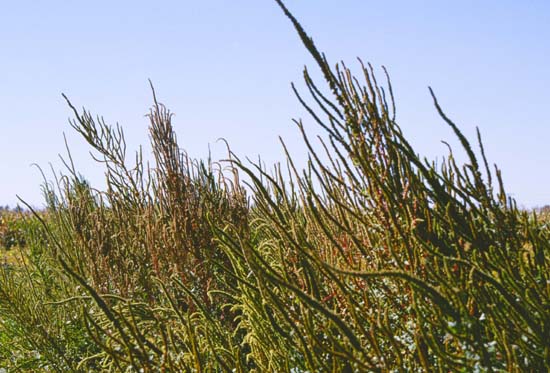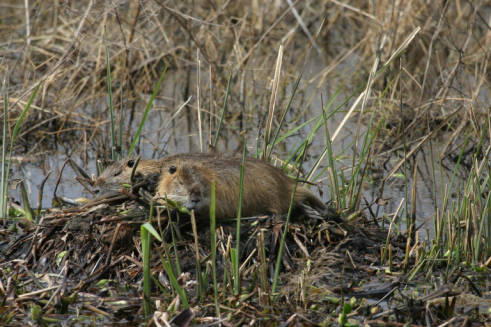National Invasive Species Awareness Week: March 3rd – March 8th
March 10th: Palmer Amaranth (Palmer amaranth) & Nutria (Myocastor coypus):
Palmer Amaranth: Palmer Amaranth, a type of pigweed, is invading the Southeast. It is a very troublesome weed for us because it is fast growing, produces a lot of seed and easily develops herbicide resistance. Palmer is a summer annual weed that can grow up to 10 feet tall. Each female plant can produce up to 500,000 seeds. Populations of this weed have developed resistance to 4 different classes of herbicides, including glyphosate or “Round-Up”. There are other types of pigweed in Florida, such as spiny and redroot pigweed, so you must be able to positively distinguish Palmer Amaranth from others.
Here are the main differences:
1. Petioles (or stalks joining leaves to the stem) are as long or longer than the leaf blades.
2. The plant has long terminal inflorescence (cluster of flowers on top of the stem).
3. They have prominent white veins on the lower surface of the leaves.
4. They have hairless leaves.
5. They are faster growing than other pigweeds.
If you have identified palmer amaranth in your field, treat with glyphosate. If the pigweed survives, then quickly hand-weed the female plants as soon as possible. Even if just a few plants survive this year, next year you could have thousands more. Palmer Amaranth is very difficult to control but by employing sound IPM principles it can be managed. Refer to http://edis.ifas.ufl.edu/ag346 for identification and control measures.
For more information contact the author Jennifer Bearden, Agriculture Extension Agent, 850-689-5850.
Nutria: This large rodent resembles a beaver but has a round tail. They are originally from South America and were brought to the United States for the fur business. Nutria are completely vegetarian and feed on both land and aquatic plants. Their small forelimbs are used to dig out roots and rhizomes and they can eat their own weight in plants each day. Feeding occurs anytime but is most often at dawn and dusk. From their initial release in Louisiana they have spread all over the Gulf coast. There are reports of them in the Chesapeake Bay area, Ohio, and along the Oregon coast. They become sexually mature very quickly (4-9 months) and have a short gestation period (130 days). Breeding year around a single female can produce 2.5 litters each year so in a short period of time high numbers of nutria can completely clear a densely vegetated area. Another problem with them is their ability to burrow into dikes and levees, making them weaker. Their occurrence in Florida has been spotty, with 45 individuals being recorded. There are records in all Florida panhandle counties except Bay.
For more information, contact the author Rick O’Connor, Sea Grant/Marine Sciences Agent 850-475-5230.


